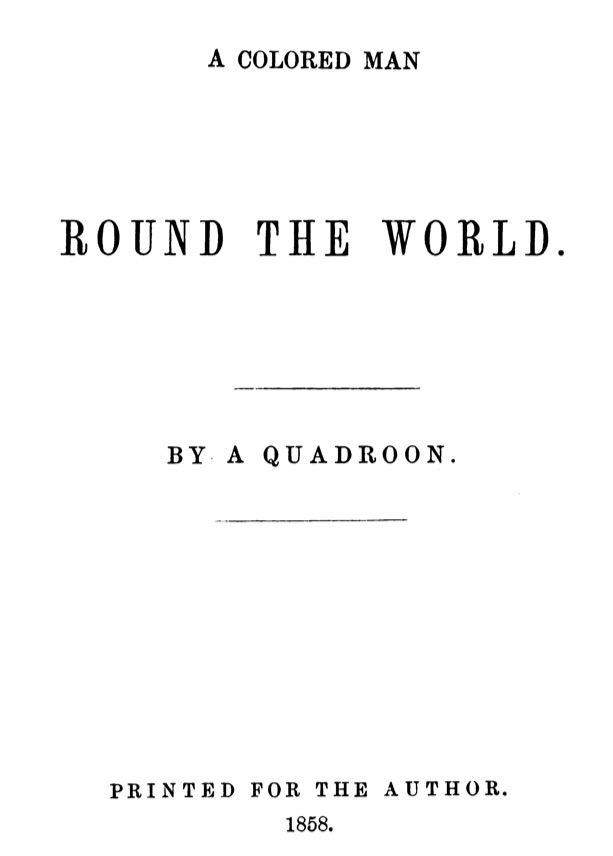
“German towns are spicy towns,” states David F. Dorr, explaining the day-to-day dueling grounds that are the streets outside of Heidelberg in his narrative A Colored Man Round the World. The formerly enslaved Dorr wrote this narrative to detail his travels with his former master through major cities in Europe and Northern Africa. Dorr was born in 1827 or 1828 into slavery in New Orleans, where his owner was Cornelius Fellowes, a wealthy lawyer. Dorr described himself as a “quadroon,” or one-quarter black, and his writings suggest that he may have passed as a white man due to his light complexion. Dorr noted in the preface of A Colored Man Round the World that Fellowes treated him “as his own son” and looked at him “as free a man as walks the earth” despite Dorr legally being a slave. When Fellowes took Dorr on his trip through London, Paris, Frankfurt, Amsterdam, Venice, Athens, Constantinople, and Jerusalem, he did so with the promise that Dorr would be freed upon their return to America. Fellowes did not follow through with this promise, leading to Dorr’s escape from Louisiana to Ohio. After settling in Cleveland, he published A Colored Man Round the World in 1858, where he depicts himself as an American tourist quite comfortable fraternizing with European aristocrats and mingling with dukes, earls, barons, and knights.Indeed, Dorr only reports having been confronted with racial prejudice in his encounters with Americans while abroad. In August 1862, a year after the beginning of the American Civil War, Dorr enlisted in the 7th Ohio Infantry as a private until November 1863, when he was wounded at the Battle of Ringgold Gap in Georgia. After his formal discharge in August 1864, Dorr continued to suffer from his injuries, was unable to work, and lived on a pension. Dorr moved back to New Orleans, where he is thought to have died in 1872.
– Kathryn Gluesenkamp (University of Missouri)